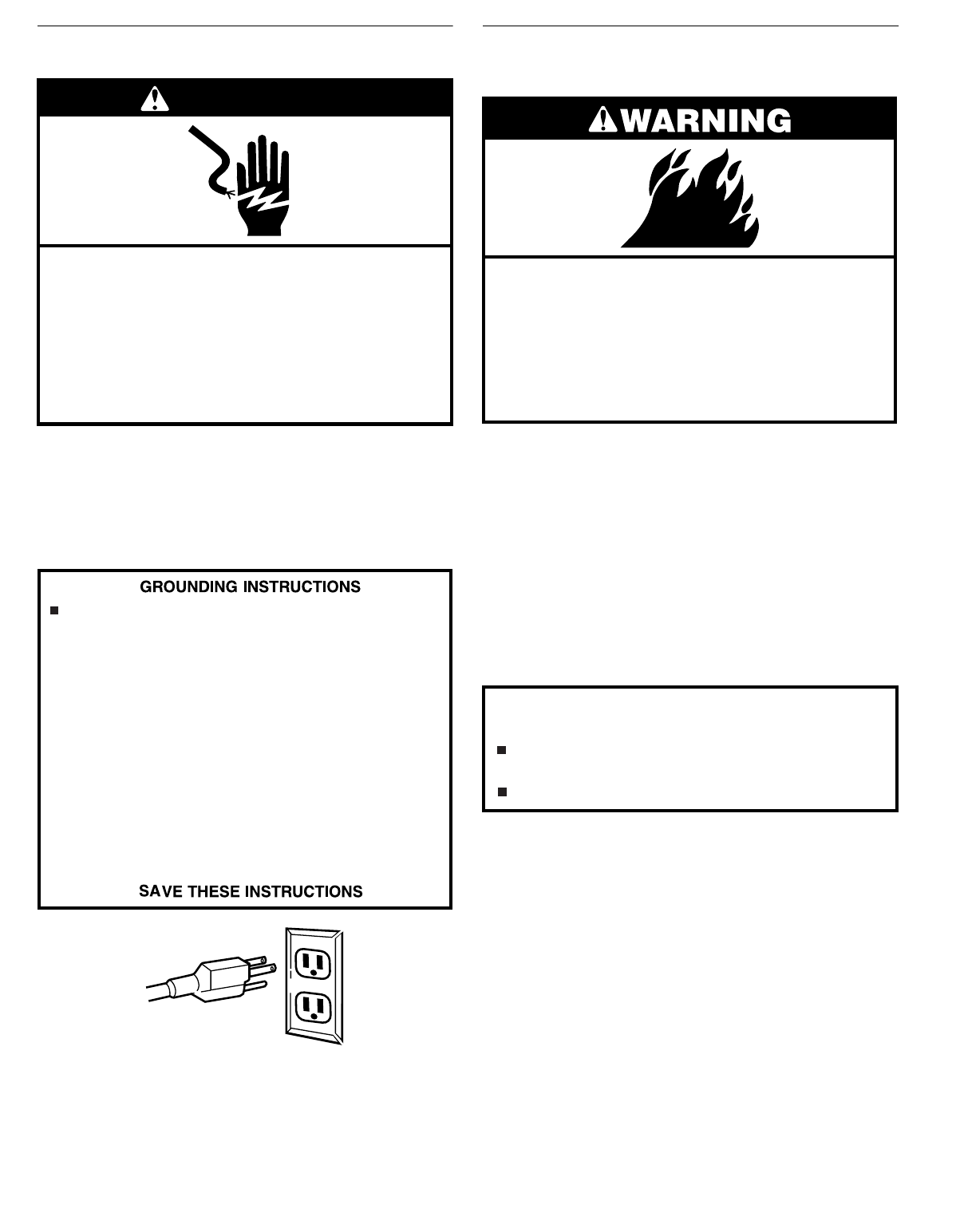
7
Electrical Requirements
■ A 120-volt, 60-Hz., AC-only, 15- or 20- ampere fused
electrical supply is required.
■ A time-delay fuse or circuit breaker is recommended. Be sure
fuse or circuit breaker matches the rating of your line.
■ Use a separate circuit serving only your dryer.
■ Do not use an extension cord
Venting Requirements
WARNING:
To reduce the risk of fire, this dryer MUST BE
EXHAUSTED OUTDOORS.
■ Do not exhaust the dryer into any gas vent, chimney, wall,
ceiling, or a concealed space of a building.
■ The diameter of the heavy metal exhaust vent must be 4 in.
(10.2 cm).
■ Do not use an exhaust hood with a magnetic latch.
■ Do not install flexible metal vent in enclosed walls, ceilings or
floors.
■ Do not use screws or other fastening devices that extend into
the interior of the vent to secure vent.
IMPORTANT:
Observe all governing codes and ordinances.
Use a heavy metal vent. Do not use plastic or metal foil vent.
Rigid metal vent is recommended to prevent crushing and
kinking.
Flexible metal vent must be fully extended and supported when
the dryer is in its final position. Remove excess flexible metal vent
to avoid sagging and kinking that may result in reduced air flow.
An exhaust hood should cap the vent to prevent rodents and
insects from entering the home.
Exhaust hood must be at least 12 in. (30.5 cm) from the ground or
any object that may be in the path of the exhaust (such as
flowers, rocks or bushes, etc.).
If using an existing vent system, clean lint from the entire length
of the system and make sure exhaust hood is not plugged with
lint. Lint should be removed again every 2 years, or more often,
depending on dryer usage. Replace any plastic or metal foil vent
with rigid metal or flexible metal vent.
Use duct tape to seal all joints.
WARNING
Electrical Shock Hazard
Plug into a grounded 3 prong outlet.
Failure to follow these instructions can result in
death, fire, or electrical shock.
Do not use an extension cord.
Do not use an adapter.
Do not remove ground prong.
n For a grounded, cord-connected dryer:
This dryer must be grounded. In the event of malfunction
or breakdown, grounding will reduce the risk of electric shock
by providing a path of least resistance for electric current. This
dryer is equipped with a cord having an equipment-grounding
conductor and a grounding plug. The plug must be plugged
into an appropriate outlet that is properly installed and ground-
ed in accordance with all local codes and ordinances.
WARNING:
Improper connection of the equipment-
grounding conductor can result in a risk of electric shock.
Check with a qualified electrician or service representative or
personnel if you are in doubt as to whether the dryer is proper-
ly grounded. Do not modify the plug provided with the dryer: if
it will not fit the outlet, have a proper outlet installed by a
qualified electrician.
Fire Hazard
Use a heavy metal vent.
Do not use a plastic vent.
Do not use a metal foil vent.
Failure to follow these instructions can result in
death or fire.
Improper venting can cause moisture and lint to collect
indoors, which may result in:
Moisture damage to woodwork, furniture, paint, wall-
Housecleaning problems and health problems.
paper, carpets, etc.
